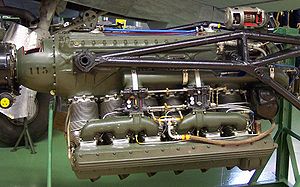다로가
Daroga다로가스(Urdu: داروہہ) 또는 다로하스(darohahs)는 무굴 제국과 영국 라지의 경찰 관리였다.[1] 무굴 제국에서는 다로가가 무굴 군주의 "슬레이브"를 감독하였다.[2]
다로가에 의해 수행된 임무
다로가들은 카흐화하스와 무굴의 군대에서 복무하였고, 그들이 수행하는 임무에 따라 다로가-이-수타크하나, 다로가-이-톱카하나, 다로가-이-바루드카하나와 같은 다양한 칭호를 부여받았다.[3]
다로하스는 최소 100평방마일(2만6000ha; 6만4000에이커)의 지역을 관할하는 지방 치안 판사에게 이렇게 넓은 지역을 관할하는 치안 판사들이기 때문에 다로하스는 보통 지방 자치단체 중 가장 강력한 곳이었다.[4] 공장을 책임지는 경우도 있었다.[5] 다로가스는 또한 시골 지역의 경찰을 지휘했다.[6]
다로가 여자
황건적의 행정에 배속된 여성에게도 다로하라는 칭호가 주어졌다. 그 직위는 황제가 직접 임명하여 부녀자와 그 가족에게 큰 영예를 안았다.[7] 결과적으로, 이런 직책을 부여받은 여성들은 잘 자라고, 교육받고, 존경할 만한 가정에서 자랐기 때문에 선택되었다.[8] 누르 자한 황후의 어머니인 아스마트 바누 베검이 한때 이 역할을 맡았다.[9] 여성 다로하들은 궁중 예절을 지키고 평화로운 생활을 영위하는 임무를 맡았다.[10]
태어나서 다로가
라미야 스리니바산은 '라즈푸트와 그 아랫사람들의 사생아 결합'에서 태어난 남자아이를 다로가와 골라, 그런 결합에서 태어난 여자아이를 다로기와 골리라고 불렀다고 진술했다.[11]
라바나 라즈푸츠
린지 할란은 라바나 라즈푸츠와 다로가를 동일시했다.[12]
참조
- ^ Shah Mahmoud Hanifi (2011). Connecting Histories in Afghanistan: Market Relations and State Formation on a Colonial Frontier. Stanford University Press. p. 142. ISBN 0-8047-7411-0.
- ^ Sezgin, Fuat; Amawi, Mazin; Ehrig-Eggert, Carl; Neubauer, Eckhard (1997). Mughal India According to European Travel Accounts: Texts and Studies, Volume 78 (reprint ed.). Frankfurt, Germany: Institute for the History of Arabic-Islamic Science at the Johann Wolfgang Goethe University. LCCN 2002487182. p. 176:
...Daroga or Superintendent of the Emperor's slaves...
- ^ "Volume 22". Indica. India: Heras Institute of Indian History and Culture, St. Xavier's College, Mumbai. 1985. ISSN 0019-686X. LCCN sa66002480. pp. 143–144:
The camel corps and camel gun was a very useful war innovation in the deserts of Rajasthan in general and Jaipur in particular. The camel corps was looked after by a separate department known as Sutar-Khana. The daroga-i-sutarkhana headed this department under the direct control of the State bakhshi and assisted by a mushrif, who maintained the records of expenditure and managed the other requirements of the corps. [..] This department used to cast cannon and was headed by a daroga. The Kachhwaha rulers and their artillery always remained in contact with the Mughal army. Therefore, their influence was natural. That is why the posts and designations in Kachhwaha artillery were similar to those of the Mughals. The department was headed by the daroga-i-topkhana who was assisted by the amir, mushrif, potedar, topchi, golandaj, musketeers, barkandaj and blacksmith. These officers were also attached to the department of ordnance which was known as Mahakma Atish and Baroodkhana. It was the duty of the daroga-i-baroodkhana to arrange necessary materials like lead, flax bags, salt-petre, glass and palitas for the manufacturing of gunpowder in the state. The Kachhwaha rulers used to give salary in cash to their topchi. The local soldiers were offered land; most of the musketeers were foreigners. But the officers' class was more among them. The British also succeeded in getting jobs in the Kachhwaha artillery with the rising influence of the British over Rajputana and came to be known as Firangis. The cannon which were used by the army can be classified as heavy and light artillery.
- ^ Louis A. Knafla (2002). Crime, Gender, and Sexuality in Criminal Prosecutions. Vol. 17. Greenwood Publishing Group. p. 113. ISBN 0-313-31013-0.
- ^ Mohibbul Hasan (2005). Waqai-i manazil-i Rum: Tipu Sultan's mission to Constantinople. Aakar Books. p. 14. ISBN 81-87879-56-4.
- ^ Sen, S. P., ed. (1970). "Volume 9". The Quarterly Review of Historical Studies. Kolkata, India: Institute of Historical Studies. ISSN 0033-5800. LCCN sa63003439. p. 95:
The rural police were subject to the orders of the Daroga...
- ^ Lal, K.S. (1988). The Mughal Harem. New Delhi: Aditya Prakashan. p. 52. ISBN 8185179034.
- ^ Mukherjee, Soma (2001). Royal Mughal Ladies and their Contributions. New Delhi: Gyan Publishing House. p. 37. ISBN 8121207606.
- ^ Jahangir, Nur-ud-Din Muhammad Salim (1974). The Tuzuk-i-Jahangiri: or memoirs of Jahangir. Lahore: Sang-e-Meel Publications. p. 216. OCLC 83636859.
- ^ Abu'l Fazl Ibn-Mubarak (1977). D.C, Phillot (ed.). The Ain-i-Akbari. H. Blochman, tr. New Delhi: Munishram Manoharlal. pp. 45–47. OCLC 631607437.
- ^ Sreenivasan, Ramya (2006). "Drudges, Dancing Girls, Concubines: Female Slaves in Rajput Polity, 1500–1850". In Chatterjee, Indrani; Eaton, Richard M. (eds.). Slavery and South Asian History. Bloomington, USA: Indiana University Press. pp. 136–161. ISBN 978-0253116710. LCCN 2006008098. OCLC 191950586. p. 144:
More derogatory terms included gola (fem. goli) and daroga (fem. darogi), each suggesting descent from the illegitimate union of Rajputs and their "inferiors".
- ^ Harlan, Lindsey (2018) [First published 1992]. "Satimata Tradition: The Transformative Process". Religion and Rajput Women: The Ethic of Protection in Contemporary Narratives. University of California Press. pp. 112–153. ISBN 978-0520301757. LCCN 91002389. OCLC 1031457813. p. 145:
They would be Darogas (also called Ravana Rajputs), who constitute an endogamous caste of palace servants.


